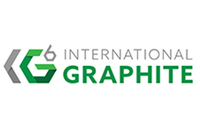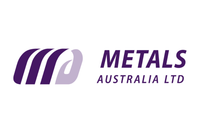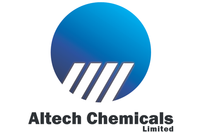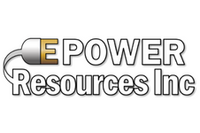The Conversation (0)

Brent Nykoliation, Energizer Resources’ senior vice president of corporate development, recently spoke to Graphite Investing News about his company’s recent news, future plans and how graphite prices are currently doing.
Graphite Investing News (GIN) recently had the chance to speak with Brent Nykoliation, senior vice president of corporate development at Energizer Resources (TSX:EGZ,OTCQX:ENZR), a Toronto-based mineral exploration and mine development company focused on its Molo graphite project, located in Southern Madagascar.
In the interview below, Nykoliation discusses the company’s recent news, future plans and how graphite prices are currently faring.
GIN: In the last couple of months, Energizer Resources has released a slew of exciting news about its Molo graphite project. To start off, can you tell me what key things investors should know about the deposit?
BN: Molo is the largest-known NI 43-101 compliant all-flake graphite resource. Results from our recently completed pilot plant indicate that 47 percent of the flake can be classified as large flake and bigger, which is significant because flake is the most desirable form of natural graphite requested by potential offtake partners. It is the only form of graphite that can be used across all industries, and is the most sought-after type of graphite by the three largest-demand industries today: steel (as a refractory), the battery industry (which requires only flake graphite) and specialty (where only flake graphite is used to produce graphite foil, which acts as a heat sink for consumer electronics).
The Molo deposit is very large and extremely scalable. It represents about 1 percent of our total property area, and we have identified to date over 320 kilometers of continuous graphite mineralization — all immediately at surface. It is open along strike and is continuous at depth. The strip ratio is less than 1:1, so there’s virtually no waste whatsoever. So Molo is expected to be a low-cost, open-pit mining operation.
GIN: One of Energizer’s announcements this fall was that it commissioned and has now completed a pilot plant. My understanding is that you will be sending out large samples of graphite concentrate for prospective offtake partners to evaluate. What will they be looking for?
BN: We created over 12 tonnes of high-quality finished flake graphite concentrate and are now in the process of sending large bulk samples to prospective offtake partners; in turn, they will be evaluating our graphite for their end customers. That is very significant as it represents another derisking stage of our development and is one of the final evaluation stages required by potential offtake partners in order to complete offtake arrangements. To date, we have proven metallurgy, which is vital, and have validated to the market that the Molo graphite meets the stringent criteria required by potential buyers.
Results released to date have shown that our graphite is very high in quality, both in purity and flake structure, and has no known contaminants for battery applications. All of those things are excellent.
GIN: Are you expecting those prospective partners to find what they’re looking for?
BN: Yes. All our graphite has passed the initial tests from smaller batch samples we sent. They want to see our graphite material in very large samples to ensure that we can produce this consistently to their specifications. That’s what the pilot plant does — it is basically simulating a small mine and determines our process for when we do eventually build the mine.
GIN: How long are they expected to take to make those evaluations?
BN: Product has begun to be sent out, and we expect most of it to be placed by end of January. We expect feedback by the end of Q1 2014.
GIN: Moving on, also in the fall Energizer signed a letter of intent with Caterpillar Financial Services regarding financing. Could you explain for our readers in layman’s terms what the deal entails?
BN: Caterpillar has said, based on their confidence and the quality of the project, that they are very interested in helping Energizer finance the mine from the debt equity side.
What that means is once we secure a portion of the funding from a potential strategic partner through project investment, Caterpillar will be there for the rest in the form of debt financing pending the completion of a bankable feasibility study, which has been initiated already. The exact deal structure is yet to be worked out
GIN: When are you thinking that bankable feasibility study will be complete?
BN: We expect in the late fall of 2014
GIN: More recently, Energizer acquired the remaining 25-percent interest in Molo from its joint venture partner, Malagasy Minerals (ASX:MGY). That gives Energizer 100 percent of the Molo project. Can you explain the significance of this transaction for Energizer?
BN: This was essential for us as we evolved the project. With our delineation of a NI 43-101 compliant resource of vanadium on the same property, we realized the opportunity for industrial mineral wealth that we have. We are 100-percent focused on mine development, and owning 100 percent of these two separate deposits is very strategic for us.
GIN: Taking into account all the things that are going on, is production still on track to begin at Molo in Q2 2016?
BN: Yes. Mid-2016 is our target, and we’re tracking well to meet that. Again, that’s predicated on completing our bankable feasibility and securing an offtake arrangement and/or strategic partner. One thing investors have noticed is management’s ability to deliver on the key milestones and its ability to continue to drive the project forward regardless of the terrible market of late for junior mining. The strength of our management team speaks for itself when you consider what we have accomplished in less than two years from the discovery of the graphite.
GIN: Molo is just one of seven graphite zones Energizer has identified. Do you have any concrete plans for the other zones?
BN: Those seven are drill tested and could be stand-alone mines in their own right. Because of the sheer size and scale of the Molo, which has approximately 150 years of mine life, it is enough to meet the current demand for graphite. The nice thing is that when the markets manifest further, as industry analysts are predicting for electric vehicles and graphite foils, Energizer can easily meet that demand within our current property boundaries.
We are designing the mine to be modular so that when demand for flake graphite increases we can scale up immediately. In short, there’s no shortage of graphite on our property.
GIN: Your Green Giant vanadium deposit ranks as the third-largest known deposit in the world. How does vanadium factor into the company’s plans?
BN: Our vanadium deposit is completely discrete and separate from our Molo graphite deposit. The Molo also contains no vanadium, which is key, because any vanadium in your graphite is a contaminant to batteries.
The vanadium is very strategic for us. Since our deposit is sedimentary hosted, it is suited to producing vanadium electrolytes for vanadium-redox batteries. The vanadium was put on hold when we found the graphite because the demand for graphite is much more mature than that for vanadium, and is therefore the quickest route to development. It’s also the cheapest route since it would be about a third of the cost to build a graphite mine versus a vanadium mine. We are managing shareholder money carefully, and we believe the fastest way to shareholder returns is to focus on graphite production.
Once the graphite mine is up and running and generating cash, we plan to use part of the graphite revenue to help fund, potentially, the vanadium mine. If money was not an issue, we’d be advancing them both.
GIN: You just hired mining veteran Robin Borley as your senior vice president of mine development. He’s a seasoned mining engineer with experience opening mines in Africa.
BN: Yes, we are very lucky to have secured a professional who has a proven track record of commissioning mines on time and on budget. Robin is a vital addition to our team and again demonstrates management’s commitment to moving the project forward in a serious fashion. As we progress now to the bankable feasibility study, Robin will help optimize the costs of both capex and opex and facilitate moving Energizer from an exploration company to a mine development company.
GIN: To finish off, could you tell me what’s going on in the graphite market right now? How are prices doing?
BN: You can still get the most premium price for flake graphite, and the larger the flake the better. About a year and a half ago prices were at about $2,500 to $3,000 a tonne. We’re now looking at between $1,200 and $1,500 a tonne. The hardest hit in pricing has been the amorphous graphite and vein graphite.
But, again, there are all these new demand channels for graphite that are coming on: electric vehicles, steel applications, consumer electronics — these applications all require flake. If anything is going to appreciate, it’s going to be flake graphite.
People get all consumed about electric vehicles, but electric vehicles are still a very small portion of the current demand. Several projects out there use very high average selling prices per tonne to justify the economics of their projects because they have higher operating costs. In most cases, they have to depend upon the green movement, upon electric vehicles coming online. With the Molo, we are targeting production in two years, and investors should feel comfort in knowing that we could open tomorrow and we would sell to the largest offtake markets today at current prices, and, according to our preliminary economic assessment, make very good margins doing that. When the rest of the markets manifest, then we’ll be ready to supply them, and if that ends up being at higher selling prices, then wonderful.
GIN: Is there anything else you’d like to add?
BN: We are one of the most advanced projects out there that almost no one has heard about. We have flown very much under the radar, and that has been by design. We have chosen to utilize shareholder funds to advance development and we have been very focused in that regard. In my opinion, we have done an excellent job. Now we are ready to come out and start promoting the Molo for what all the testing results have clearly validated — that we have a world-class graphite project.
Securities Disclosure: I, Charlotte McLeod, hold no direct investment interest in any company mentioned in this article.
Editorial Disclosure: Energizer Resources is a client of the Investing News Network. This article is not paid-for content.
Interviews conducted by the Investing News Network are edited for clarity. The Investing News Network does not guarantee the accuracy or thoroughness of the information reported. The opinions expressed in these interviews do not reflect the opinions of INN and do not constitute investment advice. All readers are encouraged to perform their own due diligence.






